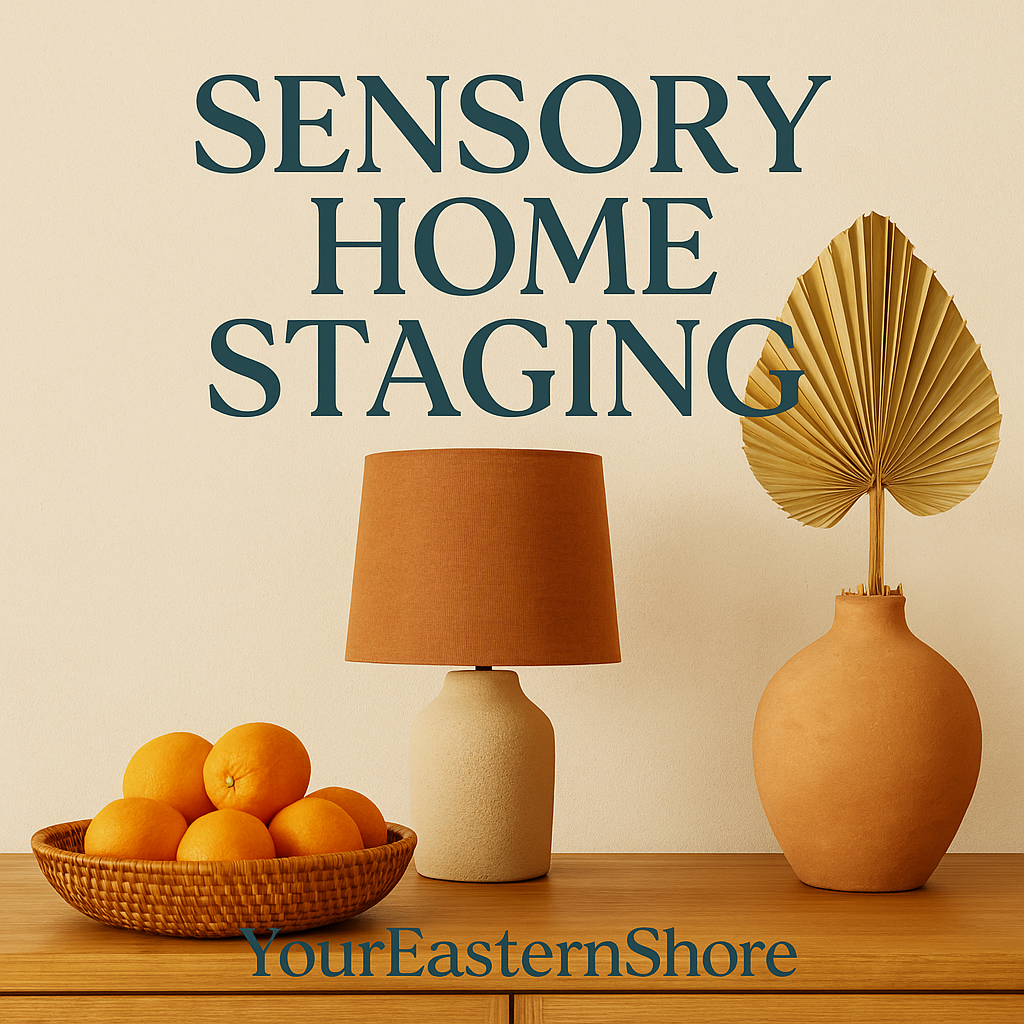What Luxury Home Sellers Need to Know
Luxury home sellers need to know that creating an emotional connection with sensory home staging is crucial for making a lasting impact on potential buyers. By engaging sight, sound, smell, touch, and taste, sellers can create a memorable experience that sets their property apart. This article will explore how to tap into these senses to not only attract but emotionally engage buyers, helping your home stand out in the competitive luxury market.
Key Takeaways
Sensory home staging is crucial in luxury real estate, enhancing emotional connections and perceptions of potential homes through multi-sensory experiences.
Incorporating elements such as color, sound, scent, and texture in staging can significantly influence buyer emotions and improve the perceived value of the property.
Professional stagers play a vital role in creating cohesive sensory narratives, optimizing layouts, and elevating the overall staging quality to attract and engage luxury home buyers.
The Importance of Sensory Home Staging in Luxury Real Estate
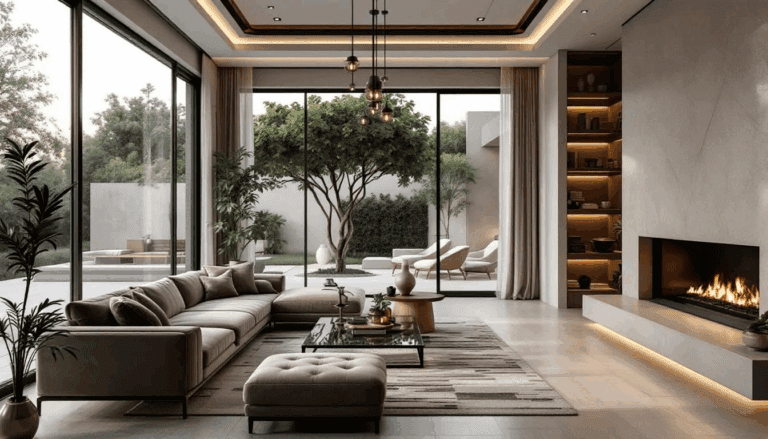
In the luxury real estate market, first impressions matter significantly. Home staging goes beyond aesthetics; it aims to create an emotional environment that resonates with potential buyers. Professional home staging aims to create an emotional connection that helps buyers visualize their future in the home, making it feel inviting and full of potential.
Staged homes have a proven track record of selling faster and for more money than non-staged homes. This is especially true in the luxury estate segment, where buyers expect a higher price level of sophistication and attention to detail. Tailoring spaces to reflect the aspirations of potential buyers, such as a children’s room for families or a serene master suite, makes the property feel like a dream home and fulfills property promises.
However, achieving this level of emotional resonance requires more than just aesthetic appeal. Creating a soothing atmosphere makes the home feel welcoming and full of possibilities. This is where sensory home staging comes into play, engaging multiple senses to create a lasting impression.
Enhancing Emotional Resonance Through Sensory Experiences
Sensory experiences play a significant role in emotional decision-making. Potential buyers’ senses are immediately engaged upon entering a home, elevating their emotional connection to the property. Incorporating sensory elements like color and light can create specific emotional responses that make the home feel cozy and welcoming, tapping into buyers emotions. The emotional connection can often be the deciding factor in a buyer’s decision.
For instance, warm colors like reds and oranges can evoke feelings of comfort and warmth, while cool colors like blues and greens can create a calming, soothing atmosphere. The way sunlight streams through a window or the coziness of a well-designed living room can make future memories feel almost tangible, strengthening the emotional bond between the buyer and the home, especially in key rooms.
Immersive experiences enable luxury buyers to form deeper emotional connections. Physical staging generally produces better emotional engagement than virtual staging, as it allows buyers to experience the home with all their senses. This multi-sensory experience is crucial in making a property feel like a potential home rather than just a house.
Creating a Multi-Sensory Experience
Creating a multi-sensory experience is about engaging potential buyers on multiple levels. It’s not just about what they see, but also what they hear, smell, and feel. This approach can make luxury properties more appealing and memorable. For example, integrating visuals from drone footage can provide a unique perspective that enhances the property’s visual appeal.
Using elements like scent or sound in home staging can further enhance the sensory experience. A hint of jasmine in the air or the soft sound of instrumental music can create an inviting atmosphere that resonates with buyers. These sensory layers work together to create a cohesive narrative that helps buyers envision themselves living in the home.
Focusing on a cohesive multi-sensory approach helps sellers create a lasting emotional impact on buyers connect. This strategy not only makes the property more appealing but also helps in the decision-making process, making it easier for buyers to imagine their future in the home.
Visual Appeal: The Power of First Impressions

First impressions are powerful tools in the real estate market. The moment potential buyers step into a home, they begin forming opinions based on what they see, which contributes to the perceived value of the property. Visual appeal plays a crucial role in this initial impression, and professional stagers know how to create inviting atmospheres that resonate with buyers.
One of the most effective ways to enhance visual appeal is through curb appeal. A well-thought-out entryway can set a welcoming tone for buyers, marking the beginning of their sensory experience. Inside the home, using color and texture strategically can foster the desired mood in each room, reinforcing the home’s narrative. More on curb appeal.
Setting a dining table with elegant tableware and a centerpiece can also enhance the appeal of the dining area during staging. These small but significant details contribute to the overall aesthetic appeal, making the home feel luxurious and inviting.
Using Color Psychology to Influence Buyer Emotions
Color psychology is a powerful tool in home staging. Strategic color choices can evoke specific emotions, influencing buyers’ perceptions and enhancing their emotional responses. Warm colors like red and orange can make a room feel cozy and inviting, while cool colors like blue and green can create a calming effect.
For example, placing a bowl of vibrant oranges on the kitchen counter subtly uplifts the mood—citrus tones are known to suppress grumpiness and spark cheerful energy. A sage green throw across a bed can evoke peace and restoration, while saffron yellow accents in an entryway invite optimism and warmth. Even small touches, like a soft turquoise vase or a blush-toned pillow, can leave lasting emotional fingerprints that buyers carry with them long after the showing.
Neutral tones, such as beige and gray, can appeal to a broader target audience by providing a blank canvas that allows buyers to envision their own style in the space. These psychological principles can significantly influence decision-making, making potential buyers feel more connected to the property and more likely to make an offer, aligning with buyer preferences and buyer psychology.
Leveraging Natural Light for Maximum Impact
Natural light is a critical element in home staging. It creates warmth and openness, making rooms feel more spacious and inviting. Bright, sunlit rooms are often perceived as more welcoming, which can significantly enhance the visual appeal of the property.
Maximizing natural light impact often involves strategic furniture arrangement and the use of soft lighting where natural light is insufficient. This creates a lasting impression that can make a significant difference in how potential buyers perceive the home, highlighting its architectural features.
Auditory Elements: Setting the Mood with Sound
Sound is an often-overlooked but crucial aspect of home staging. Utilizing sound effectively can profoundly influence potential buyers’ emotional responses during property viewings. The right background music can create an inviting atmosphere, making the home feel more welcoming and comfortable.
Sound has the potential to evoke emotions, making it a crucial aspect of creating a connection with buyers. Incorporating soft music can enhance the overall experience, helping buyers feel more at ease and more likely to envision themselves living in the home.
Choosing Background Music to Enhance Ambiance
Choosing the right background music can significantly enhance the ambiance of a home viewing. Soft classical or instrumental music can create a welcoming and soothing atmosphere that complements the aesthetic of a staged home. This type of music can create a calming environment that helps potential buyers feel more relaxed and comfortable.
Instrumental music plays a crucial role in enhancing the ambiance during home viewings, creating a welcoming and comfortable environment that encourages buyers to linger and explore the property.
Reducing Noise Pollution for a Tranquil Atmosphere
Minimizing noise pollution is essential for creating a peaceful living space that buyers will appreciate. Using rugs and upholstered furniture can minimize echoes in empty homes and reduce external noise, contributing to a quieter environment.
Incorporating indoor plants can also help absorb ambient sounds and create a more tranquil atmosphere. Soundproof windows can significantly diminish external noise, enhancing the overall sense of serenity in the home.
Olfactory Appeal: The Subtle Power of Scents
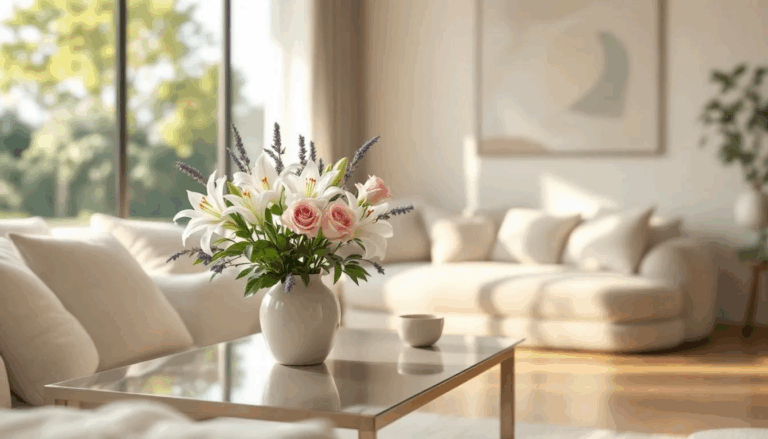
The sense of smell is quite powerful. It has a strong connection to both emotions and memories. In home staging, creating specific smells can paint an olfactory picture of a lived-in, loved home, enhancing the emotional connections potential buyers feel. Sensory experiences, like the scent of jasmine lingering in the air, can significantly contribute to buyer interest.
The goal is to create a pleasant, inviting atmosphere without overwhelming potential buyers. Subtle scents can enhance the overall sensory experience, making the home feel more welcoming and comfortable.
Incorporating Subtle Scents for a Welcoming Feel
Incorporating subtle scents can create a welcoming feel that appeals to potential buyers. Fresh scents from plants or essential oils are more favorable than synthetic fragrances, as they enhance the atmosphere positively. Subtle scents like lavender, lemon, or eucalyptus can provide a pleasant background that doesn’t overpower potential buyers.
High-end hotels often use specific scents to create a luxurious and welcoming atmosphere. For example, the Ritz-Carlton is known for its signature “white tea and fig” scent—a delicate blend that whispers freshness and sophistication from the moment guests arrive. Similarly, W Hotels infuse their lobbies with a custom blend of green tea, rose, and cedarwood, creating a sensual mood that’s both calming and chic. These carefully curated scents are part of the experience—they spark emotion, linger in memory, and reinforce the brand’s elevated identity. In home staging, the same principle applies: a consistent, well-chosen fragrance can transform a space into a sensory escape, subtly influencing how buyers feel and what they remember.
Similarly, in home staging, diffusing essential oils in moderation or using strategically placed fresh flowers can create a soothing atmosphere that enhances the overall experience.
Avoiding Common Scent Mistakes
Avoiding common scent mistakes is crucial for maintaining a pleasant atmosphere in the home. Key points to consider include:
Using a single, consistent scent throughout the home is more effective than layering different fragrances in each room.
Overpowering scents can deter potential buyers.
It’s important to maintain a subtle aroma that complements the home.
Strategic use of scents enhances buyers’ emotional connection to a home. A consistent, subtle scent creates a cohesive sensory experience, making the home feel more inviting.
Tactile Elements: Engaging the Sense of Touch
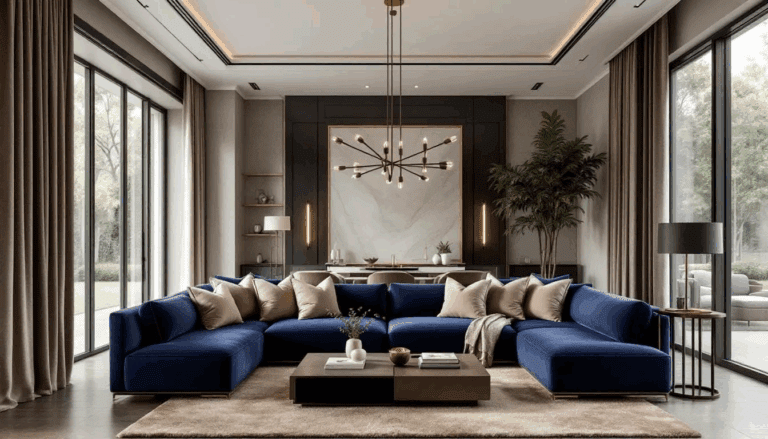
Engaging the sense of touch is another crucial aspect of home staging that can significantly enhance a buyer’s perception of luxury and warmth in a home. Tactile experiences can influence how potential buyers perceive a home’s comfort and inviting atmosphere. The texture of materials used in home staging can significantly enhance a buyer’s emotional experience, making the property feel more luxurious and cozy.
Incorporating tactile elements in home staging can significantly enhance the perception of luxury and comfort. Engaging tactile elements helps sellers create a multi-sensory experience that resonates emotionally with potential buyers.
Utilizing Textured Fabrics and Materials
Utilizing a variety of textures can create a layered, inviting atmosphere that enhances the sensory experience for potential buyers. Incorporating textured fabrics such as:
velvet cushions
plush rugs
reclaimed wood can create visual interest and depth in room design. These tactile elements make the home feel more luxurious and comfortable, enhancing its overall visual appeal.
A mix of soft and tactile materials can make spaces feel warmer and more appealing. The strategic use of textures can create a sensory experience that makes the home feel inviting and luxurious.
Arranging Furniture for Comfort and Flow
Proper furniture arrangement can significantly enhance a home’s functionality and improve the overall experience for potential buyers. Optimal furniture arrangement fosters a welcoming environment by allowing ease of movement and interaction, which improves traffic flow. This encourages buyers to relax and imagine themselves living in the space.
Incorporating soft textiles such as plush rugs and velvet cushions can create a cozy environment that appeals to potential buyers. Comfortable furniture and natural fibers like linen and wool can create a cozy atmosphere that enhances the perception of spaciousness and improves navigation within living areas, while also considering the square footage.
Tasteful Touches: Adding a Culinary Element
Incorporating culinary experiences into home staging adds a unique taste dimension that enhances the emotional connection for potential buyers. Providing refreshments like baked goods or brewed coffee creates a warm and inviting atmosphere during viewings. Setting the dining table with fine china and fresh flowers enhances the visual appeal and culinary experience of a showing.
Taste elements in sensory home staging play a crucial role in creating memorable experiences and can significantly impact buyer decisions. Events like a chef’s dinner in the kitchen help potential buyers visualize their dream lifestyle within the home.
Offering Refreshments During Open Houses
Offering refreshments during open houses creates a hospitable atmosphere that encourages potential buyers to linger. Providing light snacks or beverages can create a welcoming environment and enhance the overall visitor experience. Serving locally sourced food items not only enhances the experience but also serves as a conversation starter, making the home feel more inviting. Additionally, showcasing property offers can further entice buyers to explore the home.
The National Association of Realtors suggests that offering refreshments can make an empty house feel more like a home. This simple gesture can significantly enhance the inviting atmosphere and make potential buyers feel more comfortable and engaged.
Crafting a Cohesive Sensory Narrative
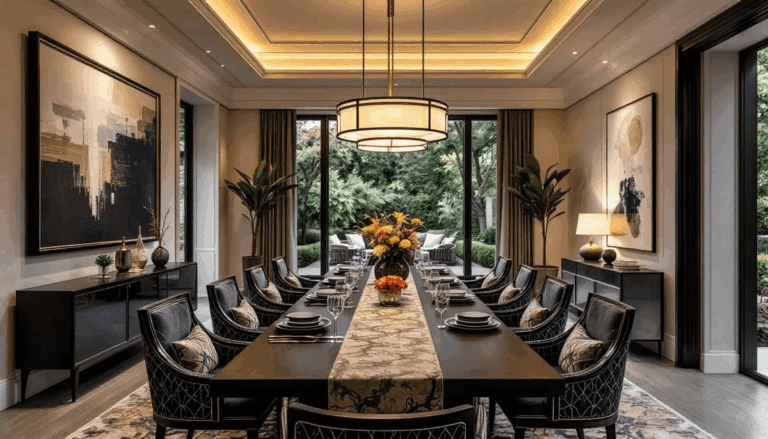
Crafting a cohesive sensory narrative is essential in creating a lasting emotional connection with potential buyers. A well-staged home helps buyers envision themselves thriving in the space, enhancing emotional connections. Each sensory element should flow seamlessly into the next, creating a multi-sensory experience that resonates with buyers emotionally.
Homes that reflect buyers’ desired lifestyle resonate more. Live jazz during private showings or a hand-written note can create a classy atmosphere and enhance the overall buyer experience. This cohesive sensory narrative helps buyers envision their future in the home, making it feel more like their dream property.
The Role of Professional Stagers in Sensory Home Staging
Professional stagers are crucial in sensory home staging because:
They have expertise in highlighting a home’s best features.
They optimize the home’s layout.
Their work can significantly enhance the selling potential of a luxury home.
Professional staging yields better buyer responses.
It results in more offers.
It leads to higher sale prices compared to DIY staging.
Many professional stagers are certified, demonstrating their expertise and adherence to industry standards. Access to a variety of resources, such as furniture and decor, enhances the staging process, creating a more appealing sensory experience for potential buyers. Traditional staging makes a significant difference in how buyers perceive a property.
Color & Emotion Pairing Guide
Inviting Emotions Through Color: A Quick Guide for Sellers
🍊 Citrus Orange: Uplifts mood, reduces irritability
Use it with: A bowl of oranges, marigold florals, or playful hand towels🌿 Sage or Soft Green: Calms and grounds
Perfect for: Pillows, bathroom art, or leafy potted plants🌞 Saffron Yellow: Brings optimism and comfort
Ideal in: Entryways, reading corners, or flower arrangements🌊 Soft Blue or Turquoise: Creates serenity and spaciousness
Best used in: Bathrooms, bedding, or accent glassware🪵 Warm Browns & Terracotta: Provide stability and earthiness
Integrate through: Wooden furniture, pottery, or woven baskets
Summary
In summary, sensory home staging is a powerful tool in the luxury real estate market. By engaging multiple senses—sight, sound, smell, touch, and taste—sellers can create an immersive experience that makes a home feel inviting and lived-in. This approach not only enhances the perceived value of the property but also helps buyers visualize their future in the space, making it more appealing and memorable.
Creating a multi-sensory experience that resonates emotionally with potential buyers can significantly enhance the selling potential of a luxury home. By understanding and implementing the elements of sensory home staging, sellers can create a lasting impression that makes their property stand out in the competitive real estate market.
Frequently Asked Questions
Why is sensory home staging important in luxury real estate?
Sensory home staging is crucial in luxury real estate as it not only establishes emotional connections but also elevates the perceived lifestyle of the property, significantly increasing its appeal to potential buyers.
How do colors influence buyer emotions during home staging?
Colors significantly influence buyer emotions during home staging by evoking specific feelings and enhancing connections to the property, which can lead to a more favorable impression and ultimately a sale.
What role does natural light play in home staging?
Natural light plays a crucial role in home staging by making spaces appear warmer and more inviting, ultimately enhancing the property’s visual appeal and making it feel more spacious. Utilizing natural light effectively can significantly improve buyers’ impressions.
How can background music enhance the ambiance of a home viewing?
Background music, such as soft classical or instrumental tracks, effectively enhances the ambiance of a home viewing by creating a soothing and welcoming atmosphere that complements the space. This thoughtful addition can significantly improve the overall experience for potential buyers.
Why should professional stagers be hired for sensory home staging?
Hiring professional stagers is crucial for sensory home staging because they have the expertise and resources to showcase a home’s best features, ultimately boosting its appeal and selling potential.

